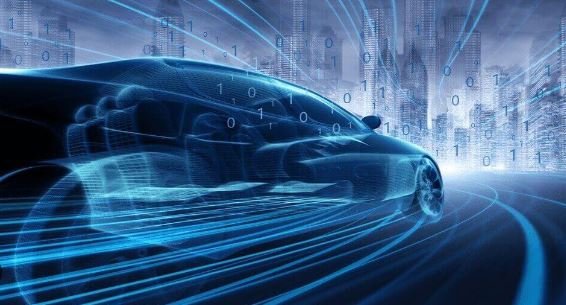In the ever-evolving landscape of automotive technology, the shift towards sustainability has become a driving force, quite literally. Electric and hybrid car technologies have emerged as pivotal players in this transformative journey, promising not only reduced carbon footprints but also cutting-edge innovations in the automotive industry. This article delves into the advancements in electric and hybrid car technology, exploring the features that make these vehicles a green and efficient choice for the modern driver.
I. **The Rise of Electric Cars:**
Electric cars have witnessed a remarkable surge in popularity in recent years, with major automotive manufacturers investing heavily in the development of electric vehicles (EVs). The primary allure of electric cars lies in their zero-emission nature, contributing significantly to environmental sustainability. These vehicles rely solely on electric power stored in high-capacity batteries, eliminating the need for traditional combustion engines that run on fossil fuels.
A. **Battery Technology:**
The heart of any electric vehicle is its battery technology. Advances in battery design and chemistry have led to increased energy density, allowing electric cars to cover longer distances on a single charge. Lithium-ion batteries, in particular, have become the industry standard due to their high energy efficiency and relatively light weight.
As electric cars continue to gain traction, research into next-generation batteries, such as solid-state batteries, is underway. These batteries aim to address current limitations, such as charging times and overall lifespan, bringing us one step closer to the widespread adoption of electric vehicles.
B. **Charging Infrastructure:**
One of the critical challenges in the acceptance of electric cars has been the development of a robust charging infrastructure. Governments and private entities are investing in the establishment of charging stations to support the growing number of electric vehicles on the road.
Electric car owners now have access to a variety of charging options, from conventional home charging stations to high-speed public charging points. This accessibility addresses “range anxiety,” a concern often raised by potential electric car buyers regarding the distance an electric vehicle can travel before needing a recharge.
II. **Hybrid Cars: Merging the Best of Both Worlds:**
Hybrid cars, bridging the gap between traditional internal combustion engines and fully electric vehicles, offer a compromise that appeals to a broader spectrum of consumers. These vehicles combine an internal combustion engine with an electric motor, harnessing the advantages of both power sources.
A. **Types of Hybrid Cars:**
1. **Parallel Hybrids:**
Parallel hybrids use both the internal combustion engine and the electric motor to power the vehicle. The electric motor assists the engine during acceleration and other high-power demand situations, enhancing fuel efficiency.
2. **Series Hybrids:**
Series hybrids primarily rely on the electric motor to drive the wheels, with the internal combustion engine serving as a generator to recharge the battery. This configuration allows for all-electric driving at lower speeds.
3. **Plug-In Hybrids (PHEVs):**
Plug-in hybrids, a variant of hybrid cars, feature larger battery packs that can be charged via an external power source. This allows for extended electric-only driving ranges, making them an attractive option for those seeking a balance between electric and conventional driving.
B. **Regenerative Braking:**
Both electric and hybrid cars often incorporate regenerative braking systems. This technology converts kinetic energy generated during braking into electric energy, which is then stored in the vehicle’s battery. This not only enhances overall efficiency but also contributes to increased range for electric vehicles.
III. **Innovations in Electric and Hybrid Car Technology:**
A. **Autonomous Driving Features:**
Electric and hybrid cars are at the forefront of autonomous driving technology. Advanced driver-assistance systems (ADAS) and self-driving capabilities are becoming commonplace, offering increased safety and convenience. These features include adaptive cruise control, lane-keeping assistance, and automated parking.
B. **Integration of Artificial Intelligence:**
Artificial intelligence (AI) plays a pivotal role in optimizing the performance of electric and hybrid vehicles. AI algorithms manage power distribution, predict driving patterns, and enhance overall energy efficiency. This integration ensures that these vehicles adapt to individual driving styles, further optimizing their environmental impact.
IV. **Cash for Cars: A Sustainable End-of-Life Solution:**
As the automotive industry undergoes this green revolution, the need for sustainable end-of-life solutions for traditional combustion engine vehicles becomes apparent. Junk car for cash programs have emerged as an environmentally friendly way to dispose of old vehicles while encouraging responsible recycling practices.
A. **Environmental Impact:**
Traditional cars, powered by internal combustion engines, contribute significantly to air pollution and carbon emissions. Cash for cars programs incentivize vehicle owners to retire their old, polluting vehicles in exchange for monetary compensation. This not only removes environmentally harmful vehicles from the road but also encourages the adoption of cleaner, more sustainable alternatives.
B. **Recycling and Reuse:**
Cash for cars initiatives promote the recycling and responsible disposal of automotive components. Salvageable parts are harvested for reuse, and materials such as metals and plastics are recycled to reduce the environmental footprint associated with the manufacturing of new vehicles.
By participating in a used car buyer program, individuals contribute to the circular economy, where the materials from retired vehicles are repurposed to create new products, minimizing waste and promoting resource conservation.
V. **Conclusion: Driving Towards a Greener Tomorrow:**
Electric and hybrid car technologies represent a paradigm shift in the automotive industry, offering sustainable alternatives to traditional combustion engine vehicles. From advancements in battery technology to the integration of artificial intelligence, these vehicles are paving the way for a future where driving is not only efficient but also environmentally responsible.
As the world embraces the benefits of electric and hybrid cars, the importance of responsible vehicle disposal cannot be overstated. As we navigate the road ahead, the convergence of electric and hybrid car technologies and responsible end-of-life practices will undoubtedly steer us towards a brighter, cleaner, and more eco-friendly future.


